もし、社会のどん底から国の頂点にまで上り詰めた男がいるとしたら、あなたはその物語に興味を惹かれませんか?日本の戦国時代、まさにそれを実現したのが豊臣秀吉です。一介の農民の子として生まれながら、類まれなる才覚で激動の時代を駆け上がり、ついには天下人として君臨しました。彼の人生は単なる出世物語ではありません。秀吉が行った数々の政策は、戦乱で疲弊した日本の社会構造を根底からつくり変え、その後の歴史に決定的な影響を与えたのです。
- 常識破りの「人たらし」:身分の壁が絶対だった時代に、秀吉はいかにして人の心をつかみ、異例の出世を遂げたのか。その原動力となった驚くべき人心掌握術。
- 「刀狩り」と「太閤検地」の真の狙い:単なる農民の武装解除や測量ではなかった。武力と経済の両面から社会を再編成し、近世日本の礎を築いた革命的政策の核心。
- 栄光の果ての野心:天下統一という偉業を成し遂げた秀吉が、なぜ晩年に朝鮮出兵という巨大な対外戦争へと突き進んだのか。その光と影に隠された動機。
貧しい出自から信長の懐刀へ
尾張国(現在の愛知県)の貧しい農民の子として生まれたとされる秀吉。その前半生は、まさに波乱万丈でした。若くして家を飛び出し、様々な奉公を経て、やがて時代の風雲児・織田信長の家臣となります。有名な逸話として、寒い冬の日に信長の草履を懐で温めておき、信長を感心させたという話があります。これは後世の創作とも言われますが、秀吉が常に「相手が何を求めているか」を察知し、機転を利かせて行動する人物であったことを象徴しています。
信長の元で、秀吉はその才能を遺憾なく発揮します。城の修繕や兵糧の管理といった内政手腕から、難攻不落とされた城を次々と攻略する軍事の才能まで、あらゆる面で功績を挙げました。特に、退却戦で最も危険とされる殿(しんがり)を自ら買って出て成功させた「金ヶ崎の退き口」や、水攻めという奇策で敵を降伏させた「備中高松城の戦い」などは、彼の名を一躍高めました。こうして、身分が低かった秀吉は、実力だけでのし上がり、信長にとってなくてはならない存在、まさに「懐刀」となったのです。
天下統一への疾走と社会の再構築
1582年、主君・織田信長が家臣の明智光秀に討たれる「本能寺の変」が勃発。この報を中国地方で聞いた秀吉は、驚異的な速さで軍を京都へ引き返し、光秀を討ち取りました(山崎の戦い)。この「中国大返し」と呼ばれる迅速な行動により、彼は信長の後継者争いで一気に優位に立ちます。
その後、織田家の重臣であった柴田勝家を「賤ヶ岳の戦い」で破り、信長の盟友であった徳川家康とも対峙(小牧・長久手の戦い)の末に臣従させます。そして四国、九州を平定し、1590年には関東の北条氏を小田原征伐で滅ぼし、ついに日本全土を統一するという偉業を成し遂げました。
天下人となった秀吉が着手したのが、日本の社会システムを根本から作り変える一連の政策でした。その二本柱が「太閤検地」と「刀狩令」です。
- 太閤検地:全国の田畑の面積と収穫量を統一された基準で測量し、土地の価値を米の量(石高)で表しました。これにより、複雑だった土地の権利関係を整理し、全国規模での確実な徴税システムを確立。これは、大名たちの経済基盤を把握し、コントロールする上でも絶大な効果を発揮しました。
- 刀狩令:農民など武士以外の身分の者が刀や鉄砲などの武器を持つことを禁じました。「方広寺大仏殿建立のため」という名目で、釘や金具にすると言って武器を差し出させ、一揆の力を削ぐとともに、「戦う者(武士)」と「耕す者(農民)」を明確に分ける兵農分離を徹底させました。
これらの政策は、中世以来の荘園制度を解体し、武士が領地と農民を直接支配する近世的な封建社会の基礎を築く、まさに革命的な改革でした。
栄光と野望の果てに
天下を統一し、大坂城を築き、関白・太政大臣という朝廷の最高位にまで上り詰めた秀吉。その権勢はまさに絶頂を極め、豪華絢爛な「桃山文化」が開花しました。しかし、彼の野心は国内に留まりませんでした。
晩年の秀吉は、明(当時の中国)の征服を目指し、その足がかりとして朝鮮半島へ二度にわたる大規模な出兵(文禄・慶長の役)を行います。この無謀な戦いの動機については、「増えすぎた大名の力を国外で削ぐためだった」「貿易による莫大な富を求めた」「後継者である秀頼の将来のために、より広大な領土を確保したかった」など、様々な説が議論されていますが、明確な結論は出ていません。
この戦いは大きな成果を上げられず、国内外に多くの犠牲と混乱をもたらしました。そして1598年、戦いの最中に秀吉は病に倒れ、「露と落ち 露と消えにし 我が身かな 浪速のことは 夢のまた夢」という辞世の句を残し、その波乱に満ちた生涯を終えました。彼の死後、豊臣政権内の対立が激化し、天下は徳川家康の手に渡ることになります。
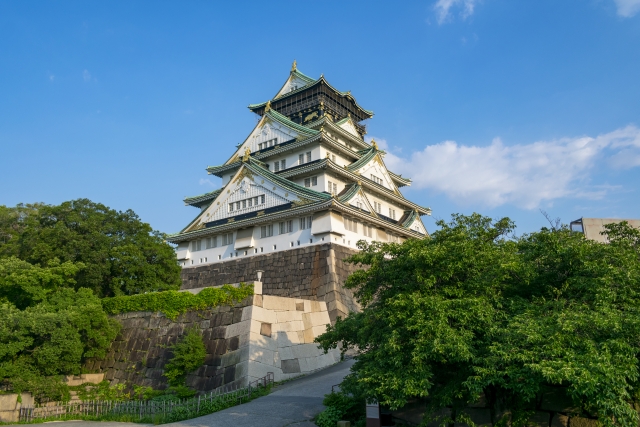
今後の動向と注目点
農民の子から天下人へ。豊臣秀吉の生涯は、戦国乱世を象徴する壮大なドラマです。彼の強引な手法や晩年の行動には批判的な評価も少なくありません。しかし、彼が断行した太閤検地や刀狩りといった政策は、戦乱の時代を終わらせ、その後の江戸時代へと続く安定した社会の礎を築いたという事実は、歴史上、極めて重要です。秀吉の築いたシステムがなければ、徳川幕府による約260年の平和な時代は、また違った形になっていたかもしれません。彼の功績と、その野望がもたらした影の部分をともに知ることが、この複雑な歴史上の人物を理解する鍵となります。
解説ポイント①:常識破りの「人たらし」
秀吉の出世の最大の武器は、人の心をつかむ能力、いわゆる「人たらし」の才能でした。彼は身分や出自にこだわらず、才能ある者を見抜いては重用しました。例えば、後に豊臣政権の重鎮となる石田三成や加藤清正も、秀吉が低い身分の頃から見出し、育て上げた人物です。また、敵対した相手であっても、降伏すれば寛大に扱い、自身の家臣団に組み入れる度量の広さも持っていました。この人心掌握術があったからこそ、多くの有能な武将たちが彼のもとに集い、天下統一という偉業を支えたのです。
解説ポイント②:「刀狩り」と「太閤検地」の真の狙い
秀吉の政策は、単なる思いつきではありませんでした。太閤検地によって全国の生産力を数値化し、一元的に把握したことは、大名への知行(給料としての土地)の配分や軍役の負担を公平かつ効率的に行うことを可能にしました。これは、大名が中央政権(秀吉)に逆らえない経済的構造を作り上げたことを意味します。一方、刀狩りは農民から武器を取り上げることで、一揆を封じ、社会を安定させる直接的な効果がありました。さらに、この二つの政策は「武士」と「農民」という身分を固定化させる「兵農分離」を決定づけました。これにより、武士は戦闘と統治に専念し、農民は農業生産に専念するという、近世社会の基本的な構造が確立されたのです。
解説ポイント③:栄光の果ての野心
天下統一後の朝鮮出兵は、秀吉の評価を大きく分ける要因となっています。その動機として、国内の平和によって有り余る武士たちのエネルギーを国外に向けさせ、国内の不安定要因を解消しようとしたという説があります。また、高齢になってからようやく授かった息子・秀頼に、より盤石で広大な支配地を残したいという親心からくる焦りがあったという見方も指摘されています。いずれにせよ、この対外戦争は、豊臣政権の財政と人心を大きく疲弊させ、秀吉の死後に政権が崩壊する一因となりました。栄光の頂点にあった天下人が最後に見た夢は、日本国内にとどまらない、さらに壮大なものでしたが、それは同時に豊臣家の没落を早める悲劇の序章でもあったのです。
参考文献
【English Article】
Toyotomi Hideyoshi Explained: Who Was He? The Farmer’s Rise to Unifier of Japan and His 3 Revolutionary Policies
What if there was a man who rose from the very bottom of society to the pinnacle of a nation? In Japan’s Sengoku period (Warring States period), Toyotomi Hideyoshi did just that. Born the son of a humble farmer, he navigated a turbulent era with extraordinary talent, eventually reigning as the supreme ruler of Japan. His life is more than just a success story. The policies Hideyoshi implemented fundamentally reshaped Japan’s social structure, which had been exhausted by constant warfare, and had a decisive impact on the course of its history.
- The Unconventional “Charmer”: In an age where social status was absolute, how did Hideyoshi capture people’s hearts and achieve an unprecedented rise to power? A look at the astonishing interpersonal skills that fueled his ascent.
- The True Aims of the “Sword Hunt” and “Taikō Land Survey”: These were not mere disarmament of farmers or simple land measurements. They were revolutionary policies that reorganized society from both a military and economic standpoint, laying the foundation for early modern Japan.
- Ambition at the Height of Glory: After achieving the great feat of unifying Japan, why did Hideyoshi plunge into a massive overseas war by invading Korea in his later years? The motivations hidden within his light and shadows.
From Humble Origins to Nobunaga’s Right-Hand Man
Hideyoshi is said to have been born the son of a poor farmer in Owari Province (present-day Aichi Prefecture). His early life was tumultuous. He left home at a young age and, after various services, eventually became a retainer to the era’s leading figure, Oda Nobunaga. A famous anecdote tells of how he warmed Nobunaga’s sandals in his robe on a cold winter day, greatly impressing his master. While this story may be a later creation, it symbolizes Hideyoshi’s character as someone who could always perceive what others wanted and act with ingenuity.
Under Nobunaga, Hideyoshi’s talents flourished. He achieved success in all areas, from administrative skills in castle repairs and logistics to military genius, capturing one supposedly impregnable castle after another. His reputation soared, particularly after he successfully volunteered for the most dangerous rear-guard position during a retreat (the “Retreat from Kanegasaki”) and when he forced an enemy to surrender using the clever tactic of flooding their castle (the “Siege of Takamatsu”). Thus, Hideyoshi, a man of low birth, rose through the ranks on merit alone, becoming an indispensable figure—truly Nobunaga’s “right-hand man.”
The Dash to Unify Japan and Rebuild Society
In 1582, the “Honnō-ji Incident” occurred, where lord Oda Nobunaga was betrayed and killed by his vassal, Akechi Mitsuhide. Upon hearing this news in the Chūgoku region, Hideyoshi marched his army back to Kyoto with incredible speed and defeated Mitsuhide (the “Battle of Yamazaki”). This swift action, known as the “Chūgoku Gaeshi” (Great Return from Chūgoku), gave him a decisive advantage in the struggle to become Nobunaga’s successor.
He then defeated Shibata Katsuie, a senior Oda vassal, at the “Battle of Shizugatake,” and even brought Tokugawa Ieyasu, Nobunaga’s ally, into submission after a confrontation (the “Battle of Komaki and Nagakute”). After pacifying Shikoku and Kyushu, he finally destroyed the Hōjō clan in the Kantō region in the “Odawara Campaign” of 1590, achieving the monumental feat of unifying all of Japan.
As the ruler of the nation, Hideyoshi initiated a series of policies to fundamentally remake Japan’s social system. The two main pillars were the “Taikō Kenchi” (Taikō Land Survey) and the “Katanagari” (Sword Hunt).
- Taikō Kenchi: This survey measured the area and productivity of all fields nationwide using a unified standard, expressing land value in terms of rice yield (kokudaka). This organized the complex land rights system and established a reliable, nationwide taxation system, which was also extremely effective in controlling the economic base of the daimyō (feudal lords).
- Katanagari: This edict forbade anyone other than samurai from possessing weapons like swords and firearms. Under the pretext of collecting metal for the construction of a Great Buddha statue at Hōkō-ji Temple, he had weapons surrendered to be used as nails and clamps. This weakened the power of peasant uprisings and thoroughly enforced a separation between “those who fight (samurai)” and “those who cultivate (farmers),” a policy known as Heinō Bunri.
These policies dismantled the medieval manorial system and laid the foundation for the early modern feudal society, where samurai directly controlled the land and its peasant inhabitants—a truly revolutionary reform.
At the Zenith of Glory and Ambition
Having unified the realm, built the magnificent Osaka Castle, and ascended to the highest court ranks of Kampaku (Imperial Regent) and Daijō-daijin (Chancellor of the Realm), Hideyoshi’s power was at its absolute peak. This era saw the blossoming of the gorgeous and opulent “Momoyama culture.” However, his ambitions were not confined to Japan.
In his later years, Hideyoshi aimed to conquer Ming China, launching two large-scale invasions of the Korean Peninsula as a stepping stone (the Bunroku and Keichō campaigns). Various theories exist regarding the motivation for this reckless war, such as a desire to redirect the energies of the now under-occupied samurai class abroad, a quest for immense wealth through trade, or an effort to secure a vast territory for his heir, Hideyori. No definitive conclusion has been reached.
The invasions failed to achieve significant results and caused immense suffering and chaos both at home and abroad. In 1598, in the midst of the war, Hideyoshi fell ill and died, leaving behind a death poem: “As the dew falls, so I vanish. Even Osaka’s splendors are but a dream within a dream.” After his death, conflicts within the Toyotomi government intensified, and control of the nation passed into the hands of Tokugawa Ieyasu.
Conclusion and Key Takeaways
From a farmer’s son to the ruler of all Japan, Toyotomi Hideyoshi’s life is a grand drama that symbolizes the Sengoku period. His forceful methods and actions in his later years are not without criticism. However, the fact remains that his policies, such as the Taikō Land Survey and the Sword Hunt, brought an end to an era of civil war and laid the groundwork for the stable society of the subsequent Edo period. Without the system Hideyoshi built, the roughly 260 years of peace under the Tokugawa shogunate might have taken a very different form. Understanding both his achievements and the shadows cast by his ambition is the key to comprehending this complex historical figure.
Analysis Point ①: The Unconventional “Charmer”
Hideyoshi’s greatest weapon in his rise to power was his ability to capture people’s hearts, a talent for being a “charmer.” He disregarded status and background, recognizing and promoting talented individuals. For example, figures like Ishida Mitsunari and Katō Kiyomasa, who later became pillars of the Toyotomi government, were discovered and nurtured by Hideyoshi from a low status. He also possessed the magnanimity to treat even his former enemies generously upon their surrender, incorporating them into his own ranks. It was this mastery of human psychology that drew many capable warriors to his side and supported his monumental achievement of unifying the nation.
Analysis Point ②: The True Aims of the “Sword Hunt” and “Taikō Land Survey”
Hideyoshi’s policies were not mere whims. The Taikō Land Survey allowed him to quantify and centrally manage the nation’s productive capacity, enabling fair and efficient allocation of fiefs (land given as salary) and military duties to the daimyō. This meant creating an economic structure where the lords could not defy the central government (Hideyoshi). Meanwhile, the Sword Hunt had the direct effect of preventing uprisings and stabilizing society by disarming the peasantry. Furthermore, these two policies solidified the “Heinō Bunri” (separation of warriors and farmers), fixing their respective social roles. This established the basic structure of early modern society, where samurai focused on warfare and governance, and farmers dedicated themselves to agricultural production.
Analysis Point ③: Ambition at the Height of Glory
The invasions of Korea after the unification of Japan are a major factor that divides opinions on Hideyoshi. One theory for his motivation is that he sought to redirect the surplus energy of the samurai class, who were left with little to do in a time of peace, toward foreign campaigns to resolve domestic instability. Another view points to the anxiety of a father who, having finally been blessed with a son, Hideyori, late in life, wanted to leave him a more secure and vast dominion. In any case, this foreign war greatly exhausted the finances and morale of the Toyotomi regime, becoming a contributing factor to its collapse after Hideyoshi’s death. The final dream of the ruler at the pinnacle of glory was grander than Japan itself, but it was also the tragic prelude to the downfall of the Toyotomi clan.


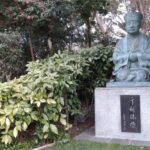
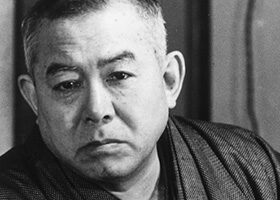
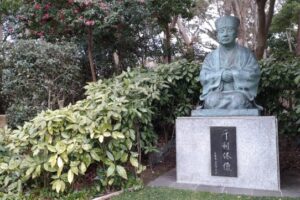
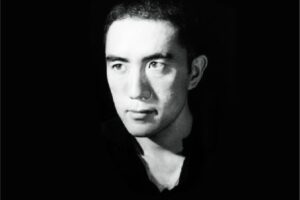
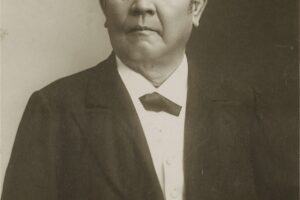
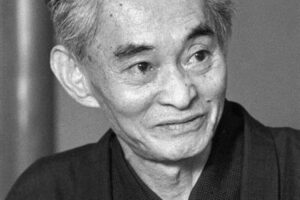
コメントを残す